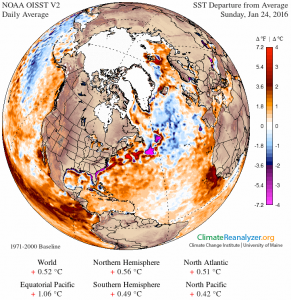This month’s open thread.
Just so you know, a lot of people have complained that these threads have devolved – particularly when the discussion has turned to differing visions of solutions – and have therefore become much less interesting. Some suggestions last month were for a side thread for that kind of stuff that wouldn’t clog interesting issues of climate science. Other suggestions were for tighter moderation. The third suggestion is that people really just stay within the parameters of what this site has to offer: knowledgeable people on climate science issues and context for the science that’s being discussed elsewhere. For the time being, let’s try the last one, combined with some moderation. The goal is not to censor, but rather to maintain somewhere where the science issues don’t get drowned out by the noise.

